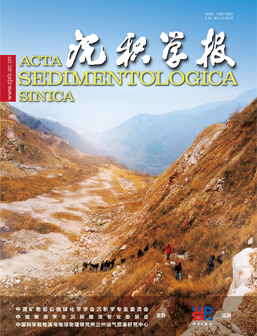Fan Delta Sedimentation and Hydrocarbon Accumulation Models of Langgu Sag: A Caes Study from the Shahejie Formation in the Jiuzhou-Wanzhuang Area
doi: 10.14027/j.issn.1000-0550.2023.079
- Received Date: 2023-06-11
- Available Online: 2023-09-16
-
Key words:
- Langgu Sag /
- Jiuzhou-Wanzhuang area /
- Shahejie Formation /
- fan delta /
- hydrocarbon accumulation model /
- subtle reservoir
Abstract: [Objective] After more than 50 years of exploration, Langgu Sag has entered the stage of oil and gas exploration and development with lithologic and structural-lithologic reservoirs as the main targets. Previous studies have been carried out on the large-scale sedimentary characteristics, hydrocarbon accumulation factors and models of Langgu Sag. However, relatively little is known of the spatial distribution characteristics and the distribution rules of the fine sand bodies. The main controlling factors of hydrocarbon accumulation and their distribution are not uniform, which restricts the evaluation and production of subtle reservoirs. [Methods] This study comprehensively used core data, well logging, seismic data, analytical tests and production data to systematically study the Shahejie Formation in the Jiuzhou-Wanzhuang area. The study aims to identify and classify sedimentary facies and microfacies types, accurately characterize the spatial distribution of sand bodies, and analyze reservoirs formation control factors such as source rocks, traps and fault dredging systems. The hydrocarbon accumulation model is established, leading to the prediction of favorable concealed lithologic or structural-lithologic reservoirs distribution zones. [Results and Discussions] The lithology is mainly fine-grained clastic rock; the sedimentary sequence is not typical, a deformation structure is clearly developed, and floating mud gravel of sandy clastic flow origin can be seen. This reflects the characteristics of the dynamic conditions of traction flow in the distal fan delta. In the study area, there are two provenance supply systems in the south and north, and a braided channel extends from the SE of the Daxing Fault to the interior of the lake in a finger-like way, forming two depositional centers in Jiuzhou and Wanzhuang. In the study area, an underwater distributary channel at the front of the fan delta extends for some distance and migrates frequently. The estuary is unstable, with an underdeveloped or small-scale estuarine bar. Mature source rocks, effective traps and drainage systems are the main controls of hydrocarbon accumulation in the middle section of Sha-3 in the study area. The abundance of organic matter shows that the oil source of the lower submember of Sha-3 in the study area comes from underlying source rocks of the lower submember of Sha-3. Using forward modeling and RGB attribute fusion, sensitive attribute optimization was performed to predict the distribution range of high-quality sandstone reservoirs combined with a series of anticlinal tectonic settings to form good structural traps along with lithologic up-dip pinch-out traps. As oil source faults, the Daxing and Jiuzhou Faults and their secondary branches are the main channels connecting the oil and gas resources of the lower submember of Sha-3 and the reservoirs of the middle submember of Sha-3, and they also control the formation of traps as a whole. [Conclusions] The results show that the study area is primarily characterized by fan-delta systems and lake systems. Within the fan-delta system, various microfacies types were identified (e.g., braided channels, submarine distributary channels, delta front sandbars, and sheet-like sands). The spatial distribution of sand bodies is characterized by thick layers of distributary channel-sandbar complexes with finger-like distribution and continuous thin sheet-like sands. The organic configurations of oil source faults, structures and even lithologic traps are the main causes of hydrocarbon accumulation in the study area, and the reservoir lithology within the traps determines the oil, gas and water distribution. Finally, favorable lithologic or structural-lithologic reservoirs development target areas are predicted in the SE wing of the Jiuzhou plunging nose area, NW wing of the Jiuzhou plunging nose structure and NE wing of the Tongxi ancient structural ridge.
| Citation: | Fan Delta Sedimentation and Hydrocarbon Accumulation Models of Langgu Sag: A Caes Study from the Shahejie Formation in the Jiuzhou-Wanzhuang Area[J]. Acta Sedimentologica Sinica. doi: 10.14027/j.issn.1000-0550.2023.079 |






 DownLoad:
DownLoad: